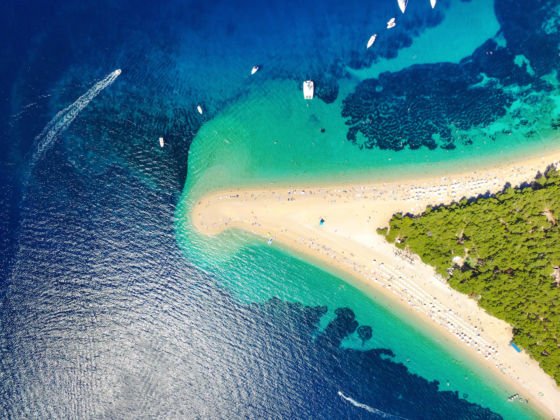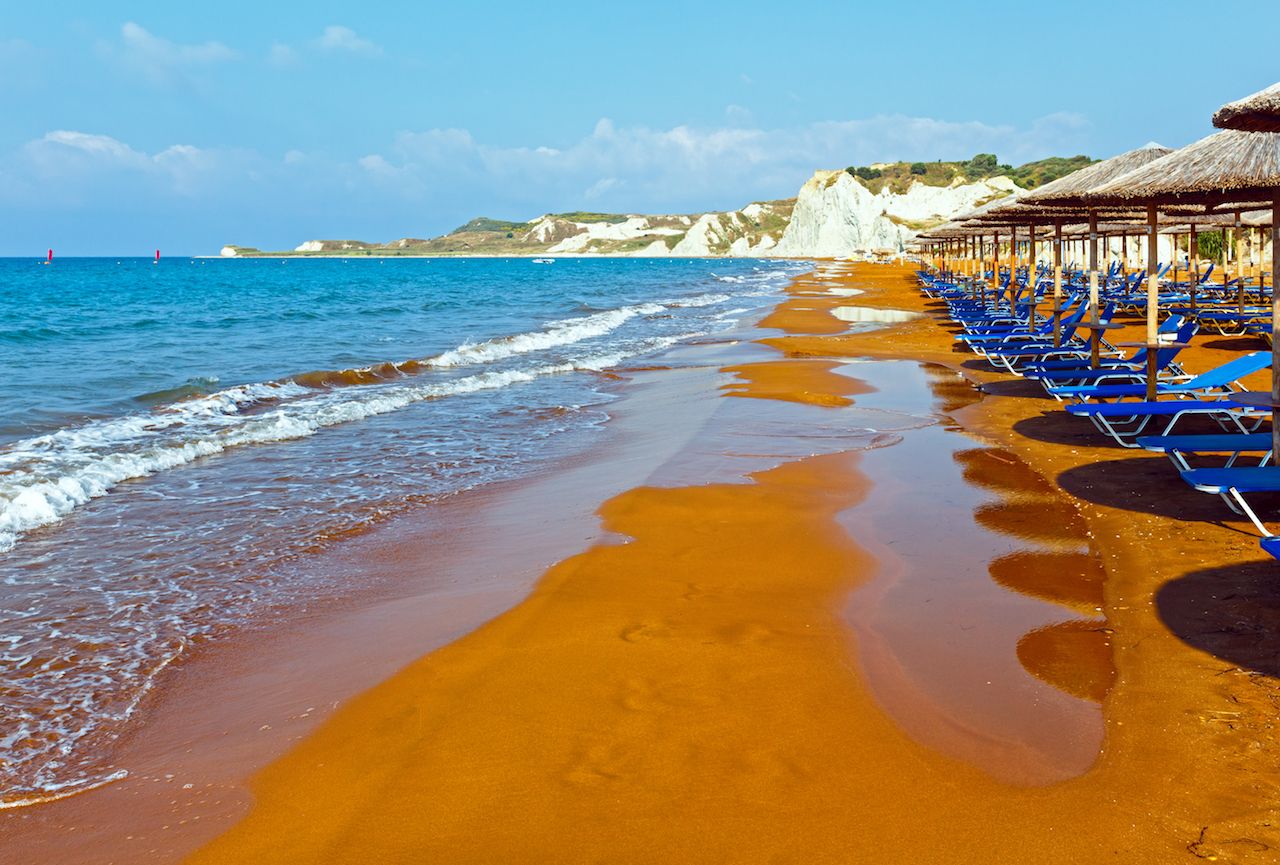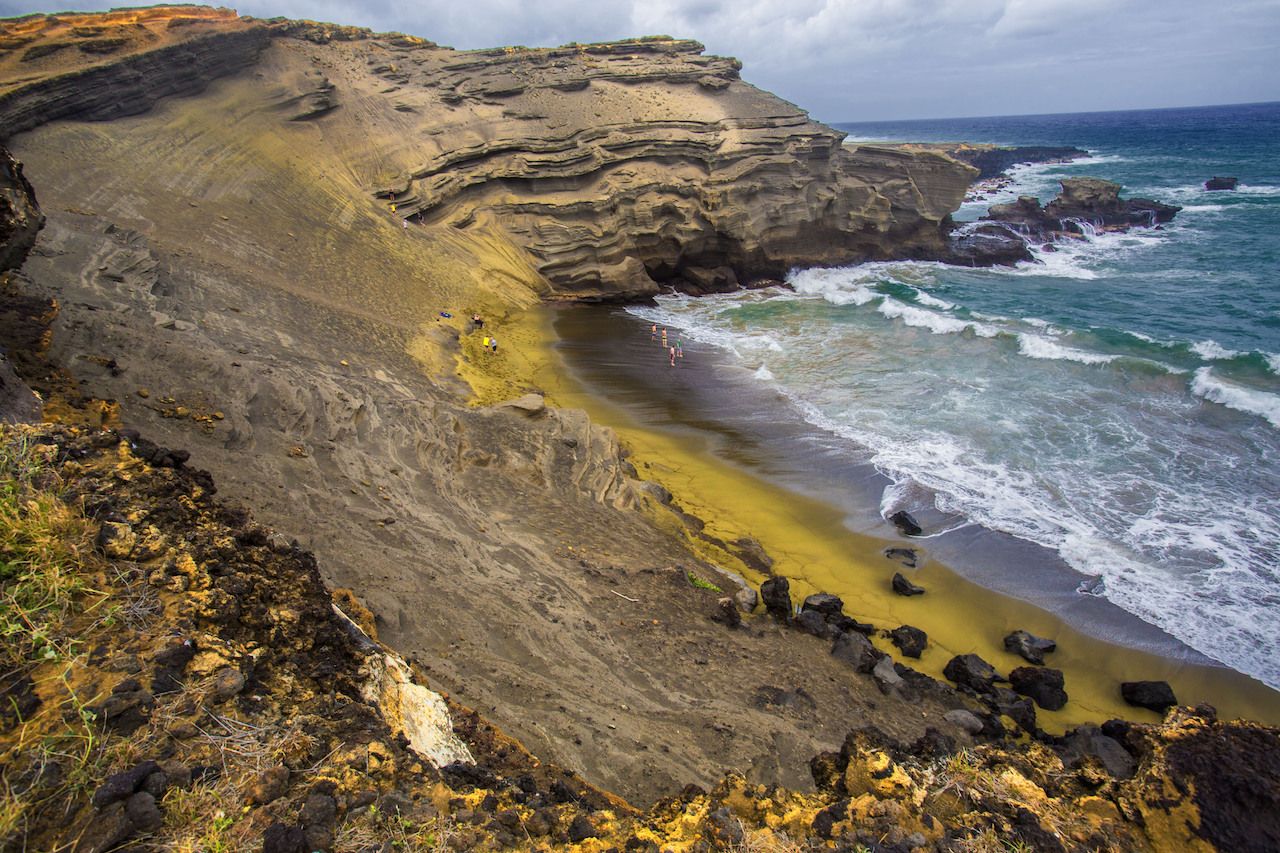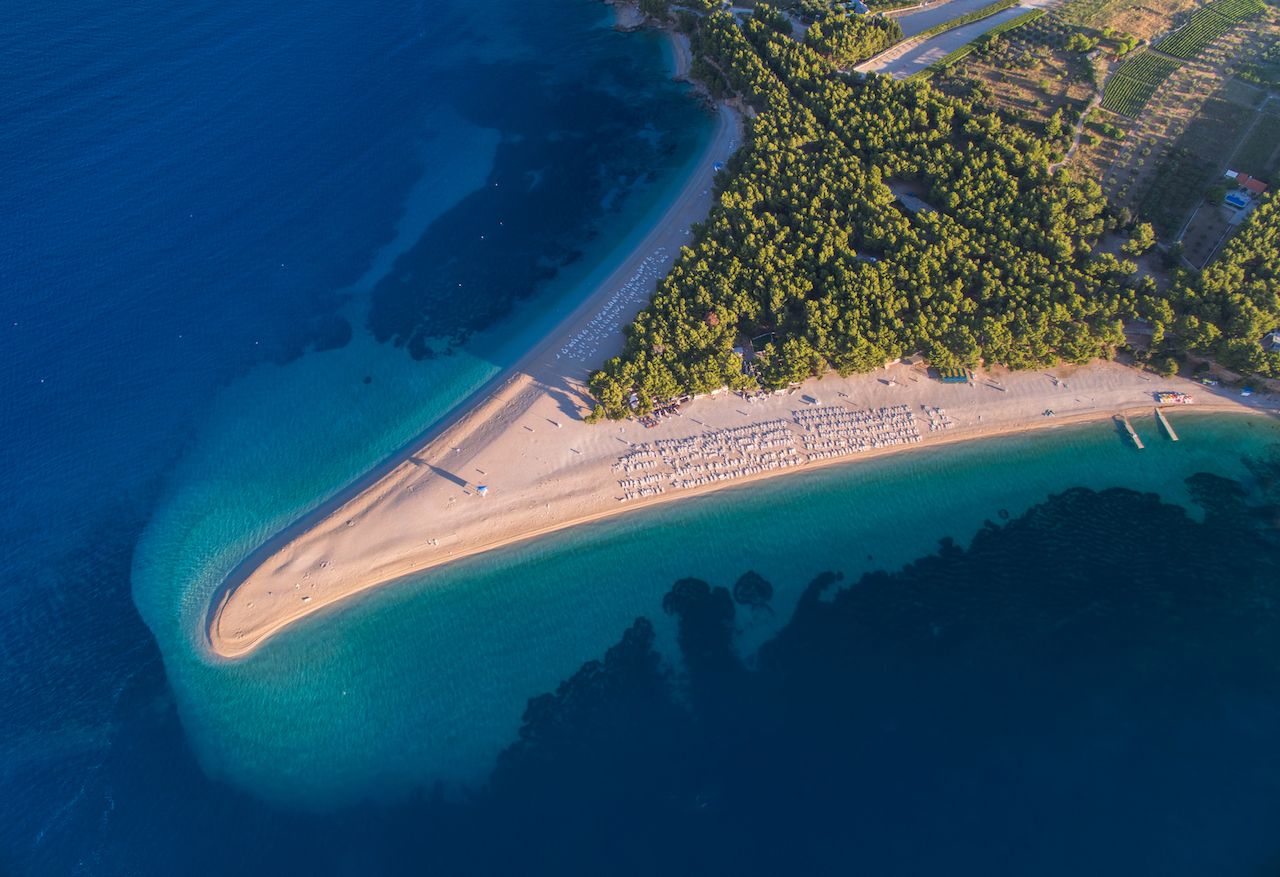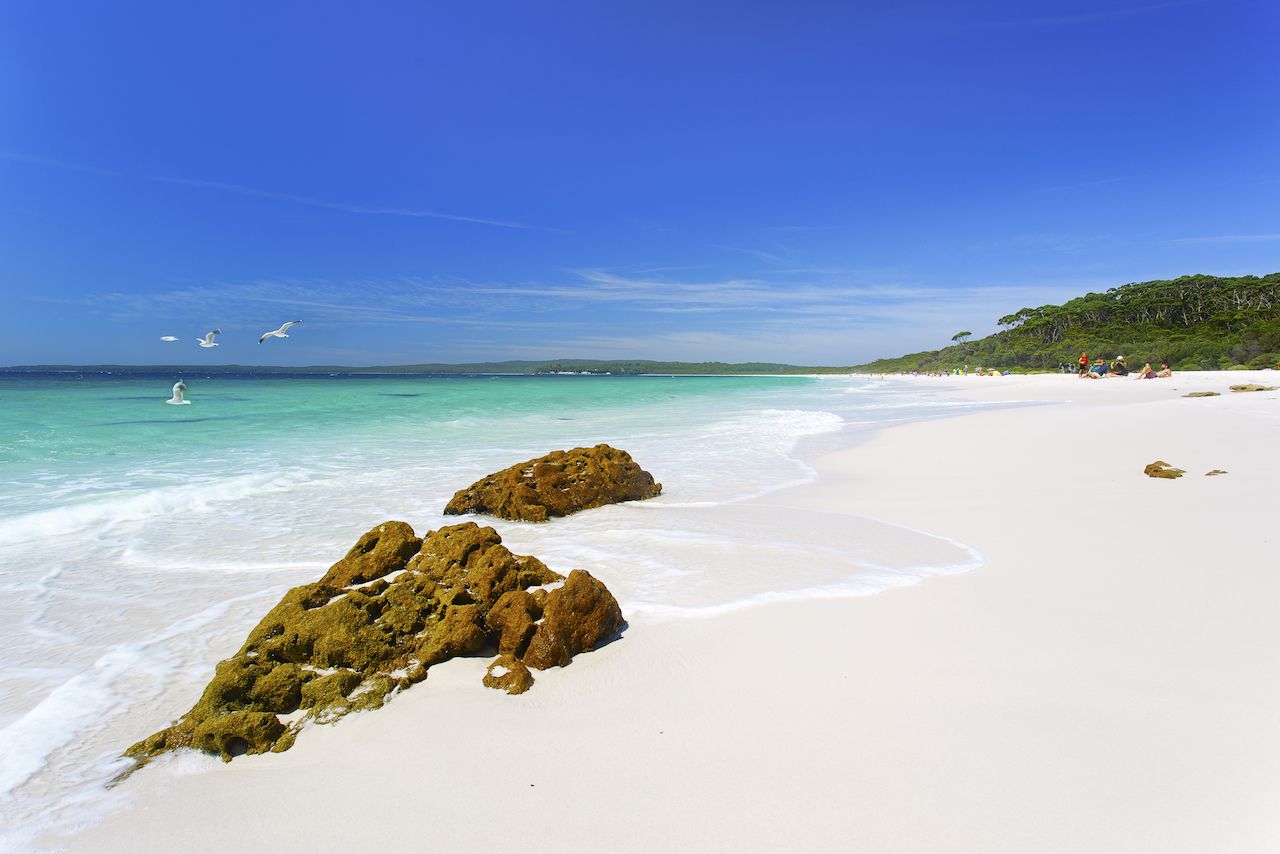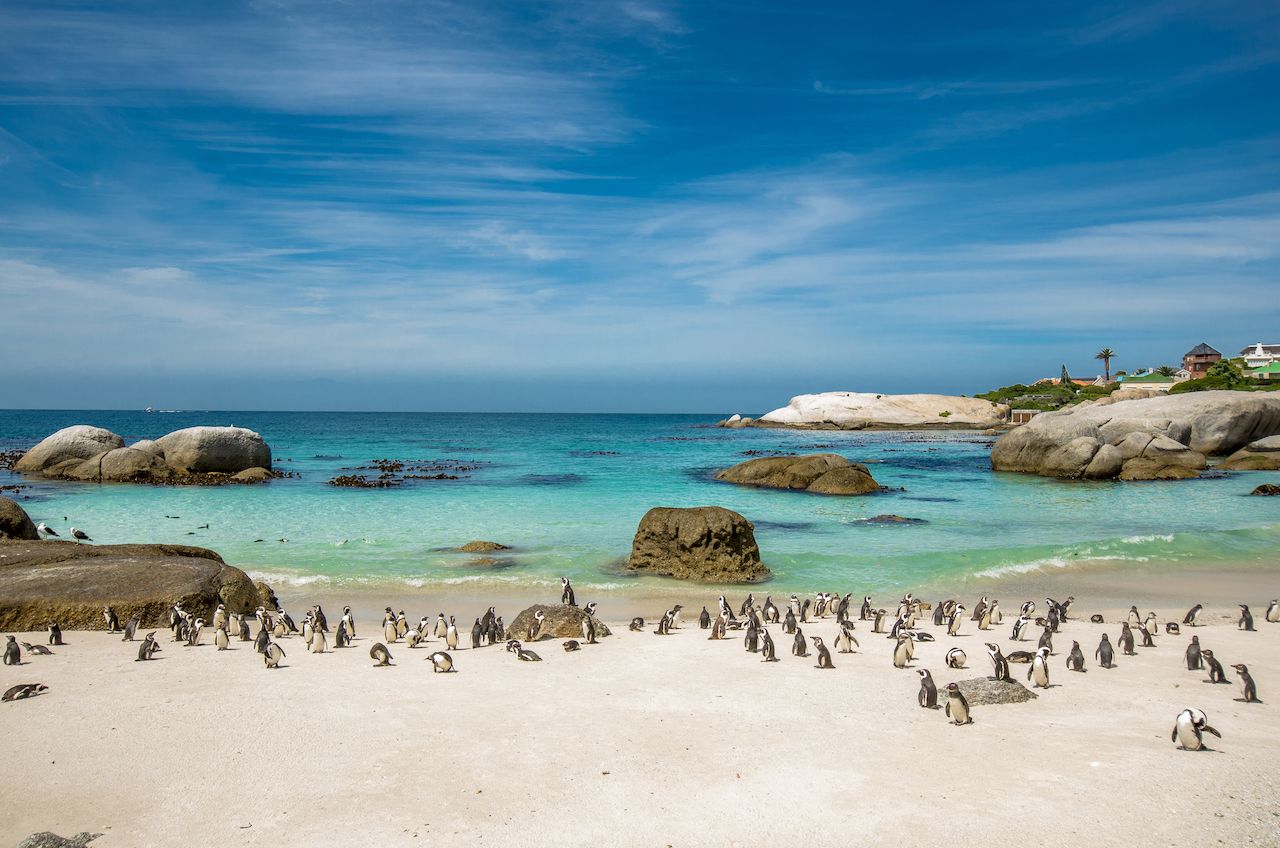Forget pale, yellow sand opposite clear, blue sea — there’s more to beaches than what you’ve seen a thousand times in movies. Like anything else, coasts around the world come in all shapes, sizes, and even colors. From pink sand to penguin colonies, these eleven strange-looking beaches are some of the coolest on Earth.
1. Glass Beach, Fort Bragg, California
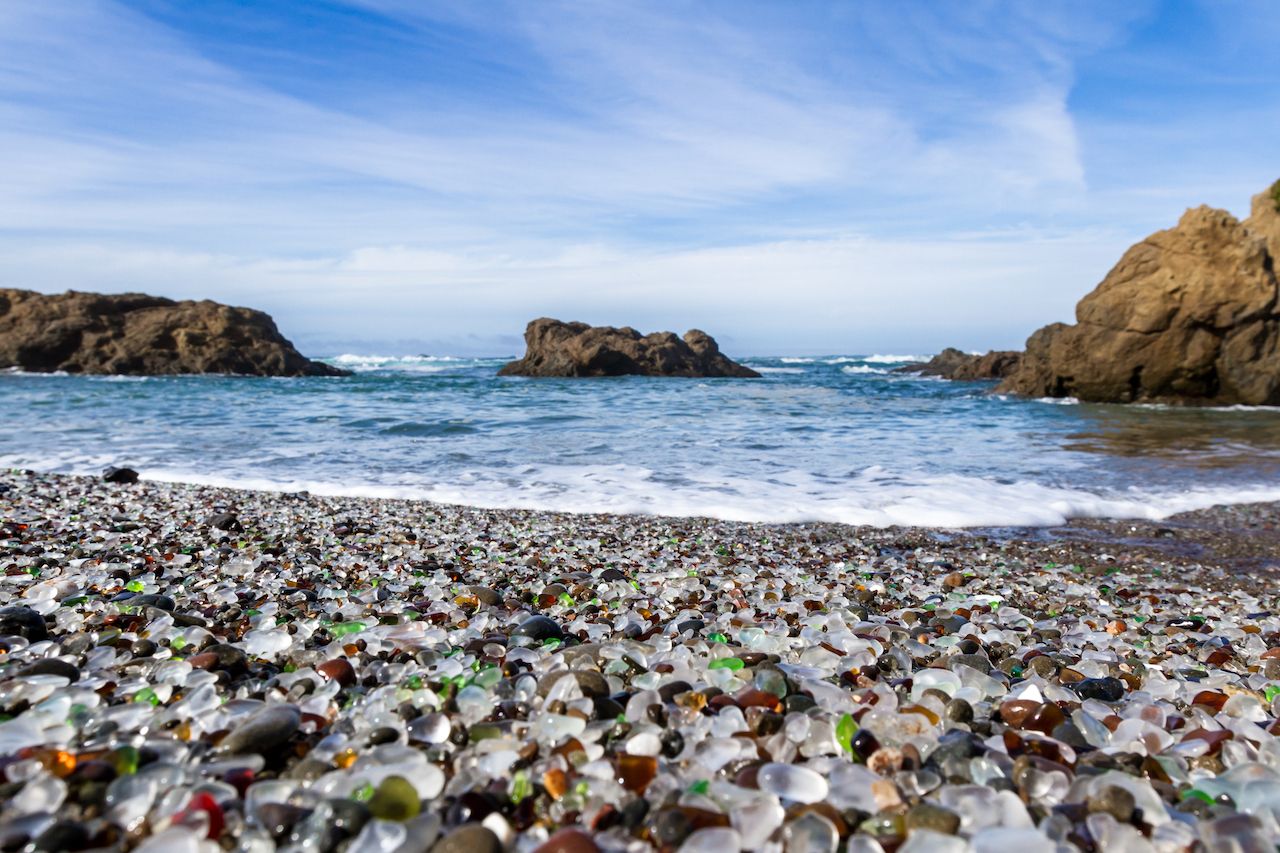
Photo: Wolletz/Shutterstock
Man’s trash is Mother Nature’s treasure at Glass Beach in MacKerricher State Park. For years, Fort Bragg residents used this and two nearby beaches as garbage dumps, disposing of everything from empty bottles and used appliances to entire cars. Cleanup efforts were made after the site closed in 1967, but considerable broken glass remained. We can thank the tides for turning our disgusting litter into works of art; over time, the ebb and flow of the Pacific smoothed the glass remnants, creating the pretty sea glass that covers the beach today. Visitors are welcome to hunt for colorful treasures while at Glass Beach but they are asked not to take any with them.
